The blueberry fruit fly (a.k.a. blueberry maggot or Rhagoletis mendax) can be a serious pest of blueberry in New Hampshire. It causes damage to fruits throughout the blueberry regions of the Atlantic States. This close relative of the apple maggot differs slightly in form and size, although for many years they both were considered the apple maggot. Increasingly, we are using the common name blueberry fruit fly to refer to this species. It is more appealing to customers, compared to the term maggot.
Description
The adult is a 1/8" fly with black zigzag bands on its wings. Its body is black with white markings and a prominent white dot between the bases of its wings. The fly is slightly smaller than its close relative, the apple maggot.
The immature stage is a white, legless maggot that can be found in ripened berries. Pupae are oval, hard, and tan-colored. They are found 1-2" deep in the soil surrounding blueberries.
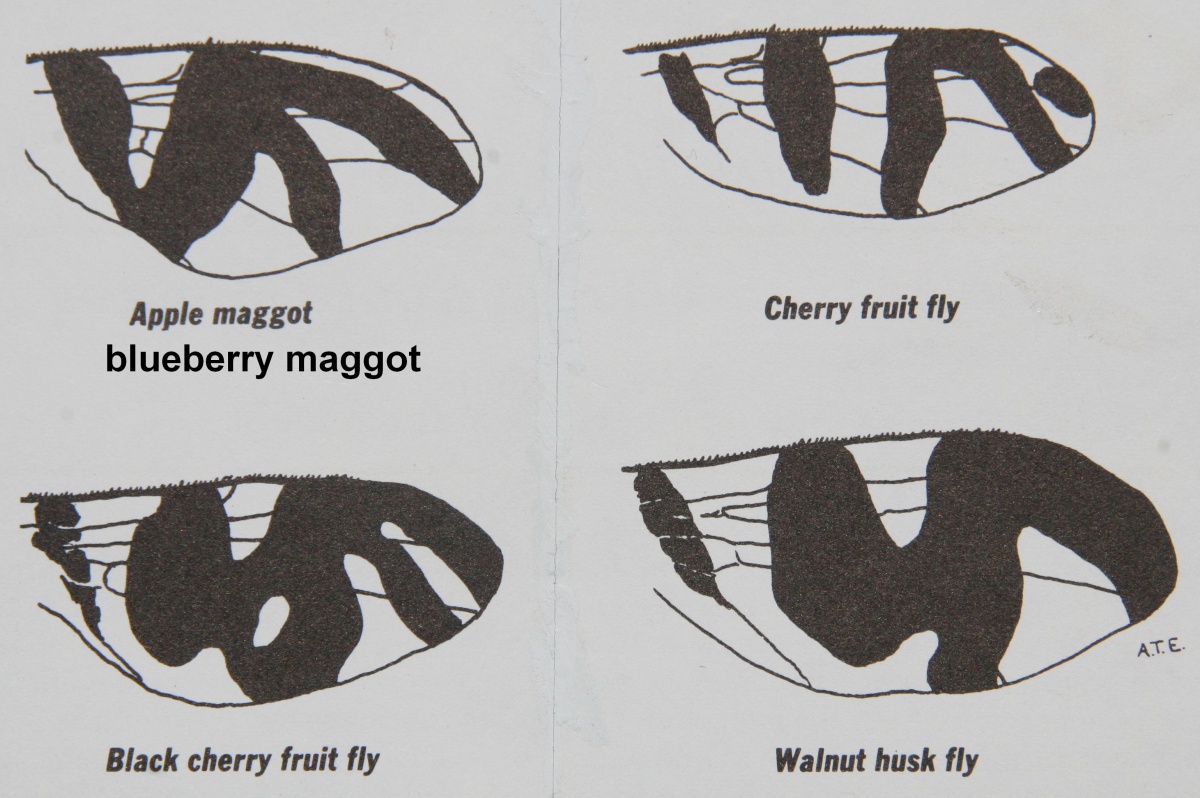
The wing band pattern is distinctive, and can be recognized at a glance.
Credit: Alan Eaton.
Life Cycle
The life cycle of the blueberry fruit fly is almost identical to that of the apple maggot. It overwinters as a pupa 1-2" below the surface of the soil. About June 30th, as the first berries ripen, the adult emerges and within a week, it feeds and mates. The females lay their eggs singly, beneath the surface of a ripening berry. The larvae hatch from the eggs and feed for a two-week period during which time larvae molt twice. When fully grown, the larvae drop to the ground (if the berries have not already fallen) to enter the soil and pupate. Then they overwinter as pupae.
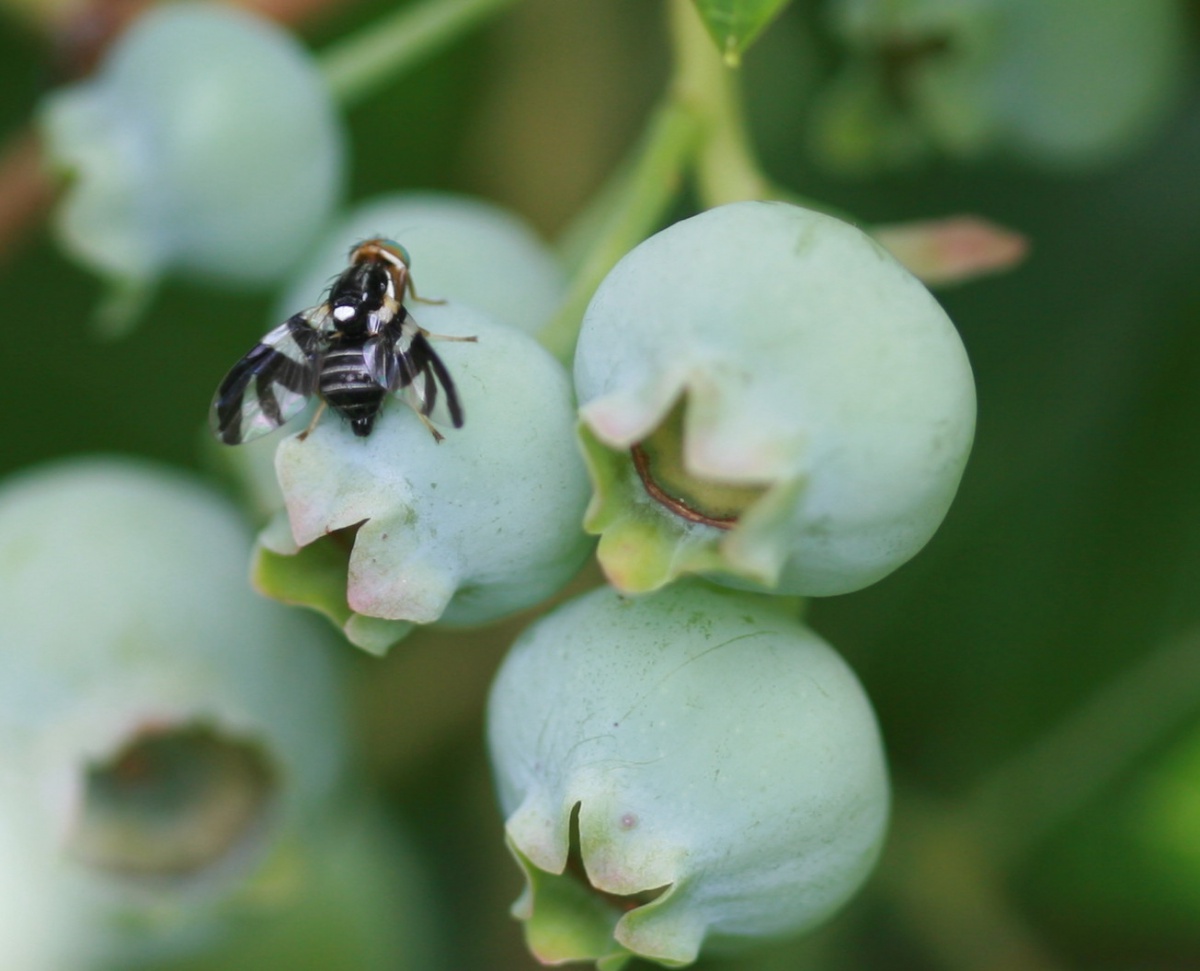
Blueberry Fruit Fly vs Apple Maggot
Besides morphological differences in size and structures, the blueberry fruit fly differs from the apple maggot in two ways:
- During egg-laying, the blueberry fruit fly female deposits only one egg per fruit, whereas the apple maggot female deposits more than one egg per fruit.
- The species do not cross hosts - apple maggots do not attack blueberries, and blueberry fruit flies do not attack apples.
Management
IPM Strategies:
- Cultural Practices - Highbush plantings that are kept well-picked usually have few problems with blueberry fruit fly. In plantings where growers do not apply insecticides and do not monitor with traps, blueberry fruit fly populations can build to very high levels, and cause shutdown of an operation (total loss of the crop). Lowbush areas frequently have more severe problems, because of the single harvest, and because rough hillsides are difficult to treat with insecticides.
- Monitoring - Sticky red sphere or V-position yellow sticky traps can be used to monitor pest numbers and timing. Refer to our fact sheet "Using Traps to Monitor Blueberry Fruit Fly in New Hampshire": http://extension.unh.edu/resources/files/Resource002077_Rep3071.pdf
- Chemical Control - There are many insecticides registered to control the pest, including materials for organic growers.
Consult your county Agricultural Field Specialist for specific recommendations.

Alan T. Eaton.
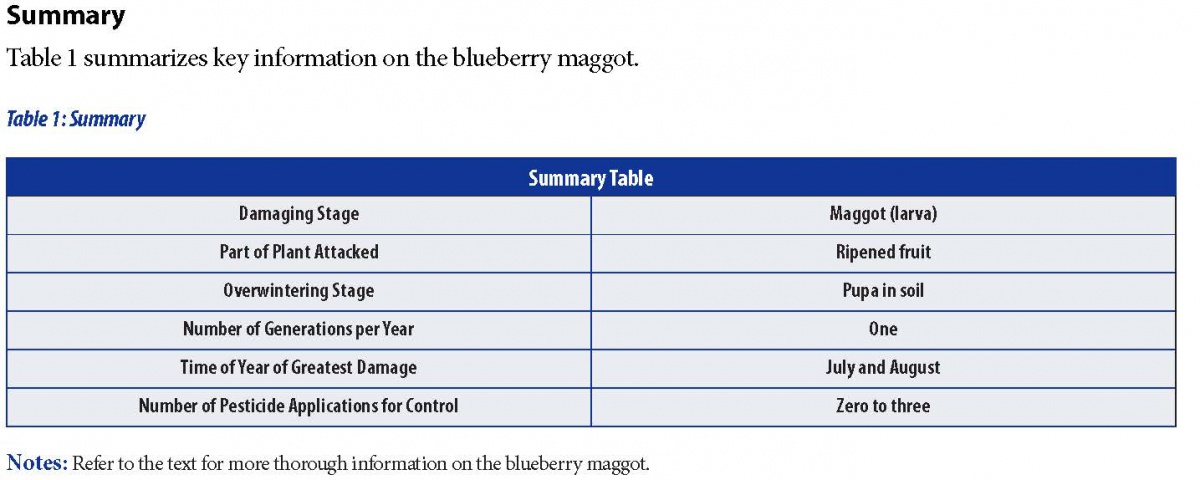
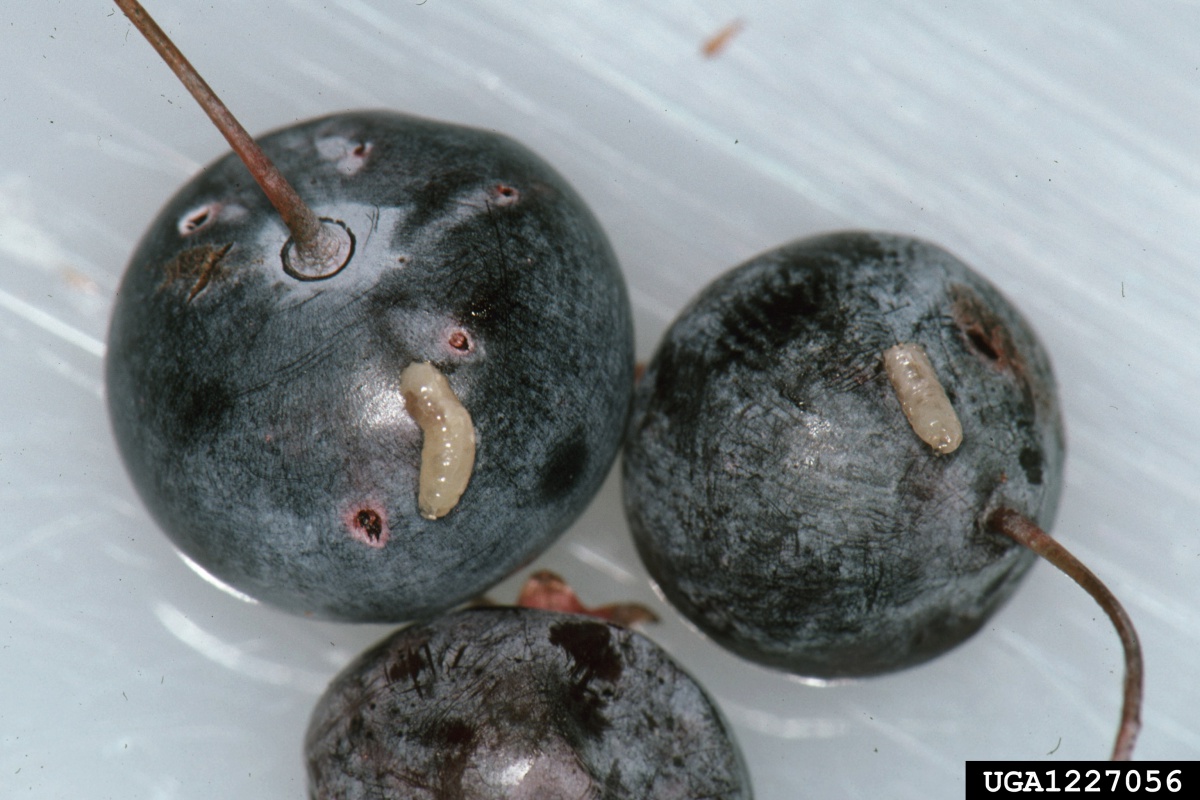
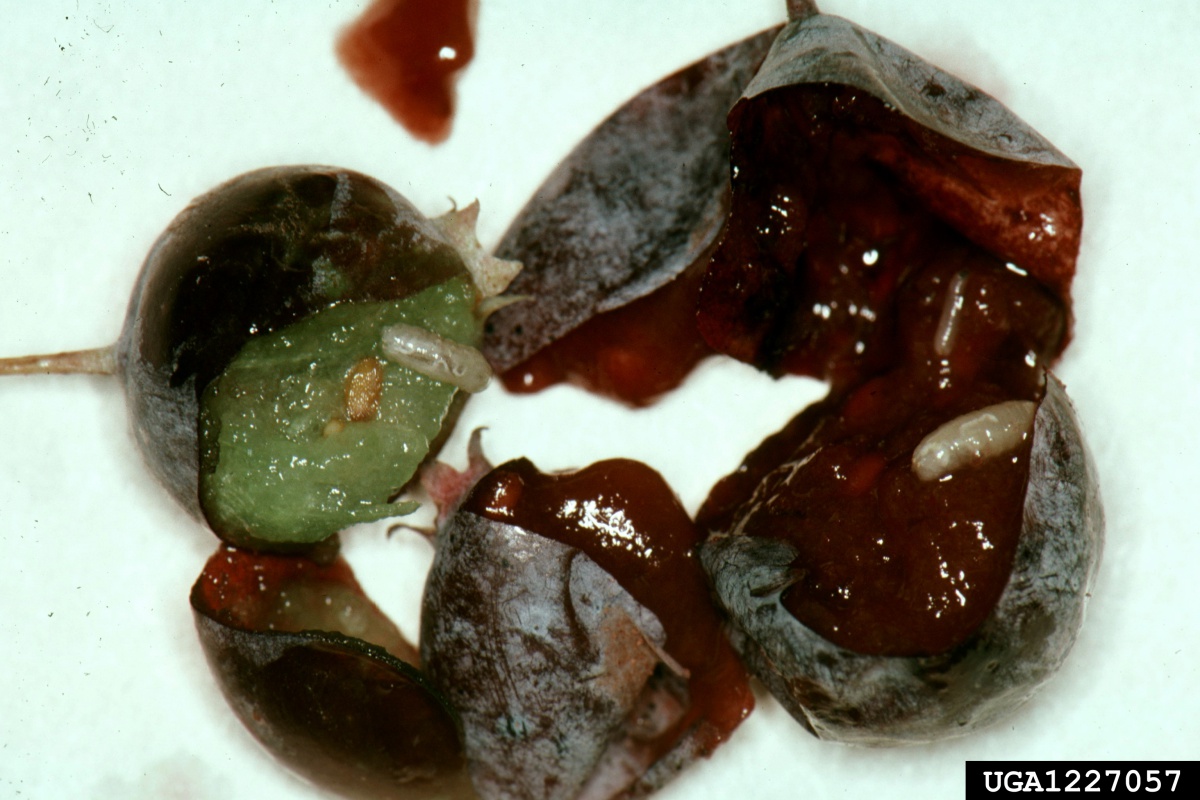
USDA Agricultural Research Service, Bugwood.org.
Stop! Read the label on every pesticide container each time before using the material. Pesticides must be applied only as directed on the label to be in compliance with the law. All pesticides listed in this publication are contingent upon continued registration. Contact the Division of Pesticide Control at (603) 271-3550 to check registration status. Dispose of empty containers safely, according to New Hampshire regulations.
Download the resource for the complete factsheet.

